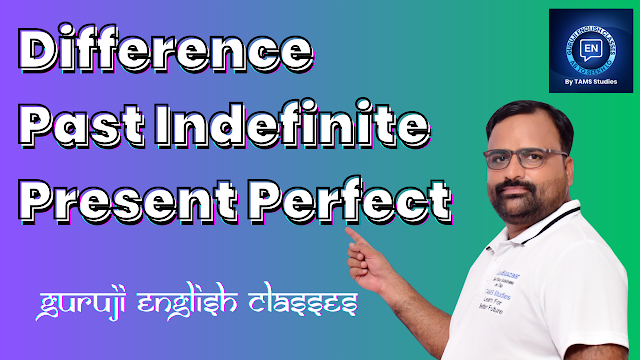Tenses are one of the most important aspects of grammar that help us express the time of an action or event. Among various tenses, Past Indefinite and Present Perfect are two crucial tenses that are commonly used in English. However, understanding the difference between these two tenses can be confusing for many learners. In this blog, we will explain the basic and advanced differences between Past Indefinite and Present Perfect tenses, the role of adverbs in the Present Perfect Tense, and provide a list of things to remember and practice.
Basic Explanation:
The Past Indefinite tense is used to describe actions or events that occurred at a specific time in the past and are now completed. The structure of the Past Indefinite tense is simple: Subject + Verb (past tense) + Object. For example, "I wrote a letter yesterday."
On the other hand, the Present Perfect tense is used to describe actions or events that occurred at an indefinite time in the past, but the results or effects of the action are still present or relevant in the present. The structure of the Present Perfect tense is: Subject + Have/Has + Verb (past participle) + Object. For example, "I have written a letter."
Advanced Explanation:
The Past Indefinite tense, also known as the Simple Past, is used to describe a finished action that happened at a specific point in time. The time of the action is usually mentioned or implied in the sentence.
For example:
- She studied for three hours last night.
- John visited his parents last weekend.
- They played football yesterday.
The Present Perfect tense, on the other hand, is used to describe an action that occurred at an indefinite time in the past, but the time is not mentioned or relevant to the conversation. The focus is on the result or effect of the action that is still present in the present.
For example:
- I have seen that movie three times.
- He has worked for this company for five years.
- They have lived in this city since 2010.
In the above examples, the time when the action occurred is not mentioned, and the focus is on the present result of the action. In the first example, the speaker has seen the movie three times, and the result is still present in their memory. In the second example, the focus is on the fact that he is still working for the company after five years. In the third example, the focus is on the fact that they are still living in the city after 2010.
Role of Adverbs in Present Perfect Tense:
Adverbs play an essential role in the Present Perfect tense as they help to express the duration or frequency of the action. Commonly used adverbs with Present Perfect tense are already, yet, just, ever, never, and for/since.
For example:
- I have already eaten breakfast.
- They haven't finished the project yet.
- She has just arrived.
- Have you ever been to Paris?
- I have never seen that before.
- They have been studying for three hours.
In the above examples, adverbs such as already, yet, and just indicate the time when the action occurred, while ever and never express the experience of the action. Adverbs for and since are used to express the duration of the action.
List of Things to Remember:
- Past Indefinite tense is used to describe a finished action that occurred at a specific time in the past.
- Present Perfect tense is used to describe an action that occurred at an indefinite time in the past, but the result is still relevant in the present.
- The structure of Past Indefinite tense is Subject + Verb (past tense) + Object. 4The structure of Present Perfect tense is Subject + Have/Has + Verb (past participle) + Object.
- Adverbs such as already, yet, just, ever, never, and for/since play a role in expressing the time, duration, or frequency of the action in Present Perfect tense.
- Past Indefinite tense focuses on the specific time of the action, while Present Perfect tense focuses on the present result or effect of the action.
- Past Indefinite tense is often used with time expressions like yesterday, last week, etc., whereas Present Perfect tense is commonly used with expressions like already, yet, just, ever, etc.
List of Things to Practice:
- Create sentences using Past Indefinite tense to describe actions that occurred at a specific time in the past.
- Practice forming sentences in Present Perfect tense to describe actions with present results or effects.
- Use adverbs (already, yet, just, ever, never, for/since) to indicate time, duration, or frequency in Present Perfect tense.
- Rewrite sentences in Past Indefinite tense to Present Perfect tense, focusing on the present result or effect.
- Engage in conversations or writing activities where you can apply both tenses accurately.
By understanding the differences between Past Indefinite and Present Perfect tense and practising their usage, you can enhance your English language skills and effectively communicate in different contexts. Remember to pay attention to adverbs in the Present Perfect tense, as they can add nuance and precision to your sentences. Keep practising and incorporating these tenses into your language usage, and you'll become more confident in expressing actions and events in English.
Cheers
Sunil Chaudhary
Digital Success Coach
YouTube Channel - Guruji English Classes


Comments
Post a Comment